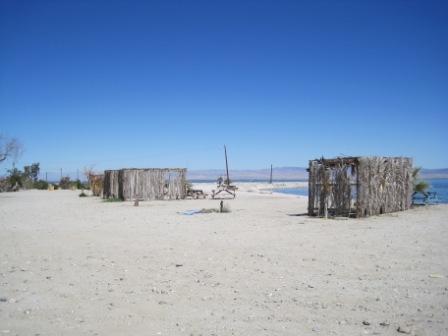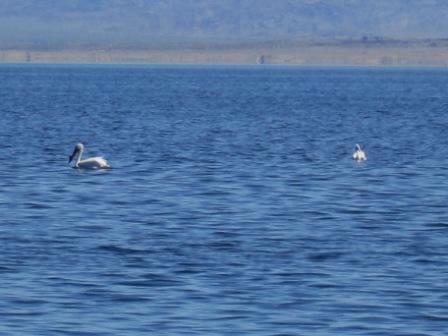As several of our astute readers knew, the photo from Friday was taken on the west coast of the Salton Sea in California. Specifically, it’s at Salton Sea Beach, a nearly deserted region that I managed to make more picturesque through careful photography. Here’s another picture of the same beach:

There were few plants at Salton Sea Beach – a palm tree here and there – and only a few waterfowl like these pelicans:

The Salton Sea is really the Salton Sink – it’s a low area that has occasionally and naturally filled with water. Given the high rate of evaporation in the region, the lakebed became highly saline over the centuries.
So what does this all have to do with a gardening website? Well, the reason the Sea exists today is because of natural flooding combined with agricultural development. Initially the Sea was seen as a boon to tourism, so spots like Salton Sea Beach and Salton City (near curiously named Squeaky Springs) became tourist destinations. But as agricultural runoff began to change the nature of the Sea, fish populations failed and so did the tourism industry.
You can see the algal bloom where runoff meets the sea (check out this Google map here). These desert valleys have been used for conventional agricultural production for many decades, and the results are seen in a sea full of fertilizers and pesticides.
In any case, a visit to the Salton Sea is both fascinating and depressing. It’s well worth the effort.